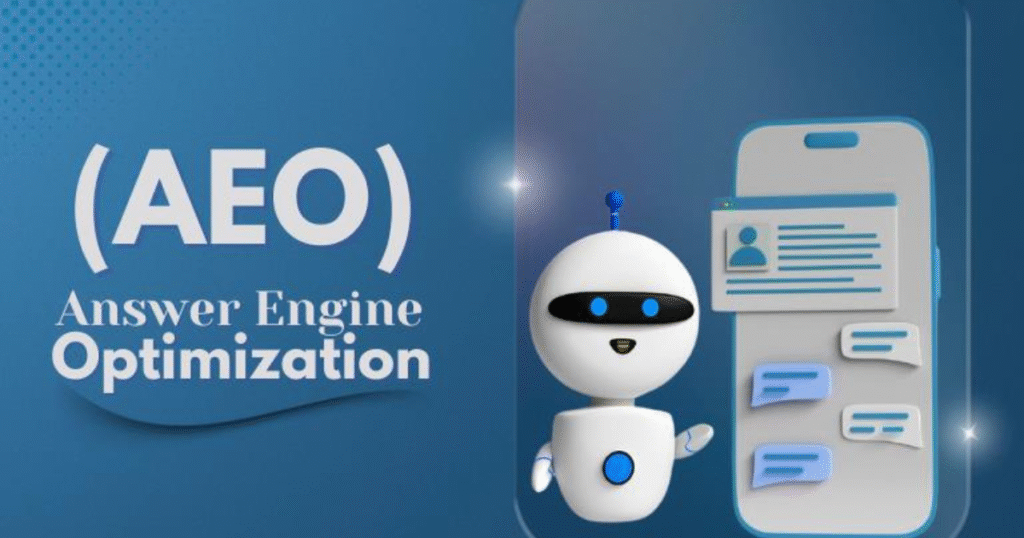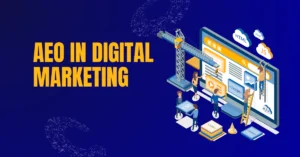What Is AEO & Why It’s the Future of Digital Success

AEO Explained: The Future of SEO and Digital Search
SEO, or Search Engine Optimization, has long been the ruler of the digital marketing landscape. But even as the search landscape has been fundamentally altered by the proliferation of artificial intelligence (AI), the rise of advanced technologies and changing user behaviors, a new acronym has emerged: AEO, stand for Answer Engine Optimization.
And, if you haven’t heard of AEO before or you just want to understand more about why it’s shaping up to be the buzzword of forward-thinking marketers, I’ve got you covered with this guide. Read on below to learn what is AEO, how it differs from SEO plus practical steps to apply AEO to your digital strategy.
What is AEO or Answer Engine Optimization?
AEO, or Answer Engine Optimization, is about optimizing content to answer user questions. Rather than just keyword stuffing, AEO focuses on the alignment of user intent with precise and and accurate and high quality answers.
Consider how voice assistants such as Alexa and Siri react to a question. When a user inquires, “What’s the best pizza in New York?”, the aide produces one short, relevant answer. This case demonstrates the nature of AEO.
Regular SEO is all about ranking for a page on the SERPs. AEO, by contrast, should be the immediate answer returned in any format, particularly in voice search queries, featured snippets, and other AI-centric systems.
Why Is AEO a Must-Have?
We’re living in a digital world that’s always changing. From where and how people are seeking information to the technology that powers searches, there are several trends supporting the need for AEO:
The growth of voice search
The worldwide market for smart speakers is projected to reach more than $35 billion by 2027, according to Statista. Now, with devices like Amazon Echo and Google Home in millions of homes, people are increasingly taking to conversational searches: “How do I fix a running toilet?” or “What do I wear to a formal dinner?” These are the questions that require direct, succinct answers.
AI-driven search experiences
Google and others are constantly trying to deliver better, faster, and richer results. Their AI-powered tools like Google’s featuring snippets or AI Bard are expected to provide users with quick answers. AEO-optimized content matches perfectly with this emerging trend by providing easy-to-understand concept explanations.
Users’ desire for immediacy
Modern customers are time-poor and require instant answers. No longer do they want to scroll through pages of links — these dense listings are likely to be biased one way or another; they want factual, trustworthy information, and they want it yesterday.
Businesses utilizing AEO can be the reliable provider that offers those answers.
What is the difference between SEO and AEO?

Although AEO and SEO are similar in that they both seek to increase visibility, their end objectives and approaches are quite different:
|
SEO |
AEO |
| Seeks to place pages in search results. | Emphasizes being the actual response to user questions |
| Relies heavily on keywords | Emphasizes intent and/or context and then Also intent in context. |
| Optimizes each and every page of the entire website | Focus on certain content sections or excerpts |
| Primarily text-based | Spotlights conversational searches, voice and AI integration. |
This is not to say that AEO will soon replace SEO, but that they are counterparts to each other. It’s important for marketers to make the most of both so they can keep up in the digital world we live in today.
How to Implement an AEO Strategy
To implement AEO, you must comprehend what your target audience’s asking, and then supply useful answers while organizing your content to satisfy AI-driven searches. Here are six steps to begin with AEO:
Know what your readers are searching for
Keep going deeper to understand what makes them look for your business. Do they want to browse some good old DIY, get product recommendations, or enjoy some industry insight? Tools such as AnswerThePublic, Google Trends and SEMrush’s keyword research tool can tell you what questions your audience are constantly asking.
No more filler fluff
AEO success relies on delivering content that addresses the core of user questions head on. Include FAQ on your site. Build blog posts around questions and “How to” guides.
Focus on featured snippets and rich results
These are the short answers Google presents at the top of a search page. To increase your chances of being featured:
- Use neat headers and subheaders.
- Give brief, clear responses (about 40–60 words).
- Use bullet points or numbered lists.
Optimize for voice search
AEO is based on voice search! To cater to this:
- Focus on long-tail keywords.
- Write the content in an engaging conversational tone.
- Use question-based headlines like, “How to,” “What is” or “Why does.”
Focus on mobile optimization
Almost 60% of all searches now come from mobile devices. Make design responsive, compress images to make the page load faster and make paragraphs shorter and scannable.
Create authority content to gain trust
Engines reward content that demonstrates expertise, authority and trust (E-A-T principle). Use reputable sources, provide accurate information, and create user-centric content. And, having an organised website and secure domain (HTTPS) is also all about credibility.
Examples of AEO in Action
Wondering how successful AEO plays out in the real world? Here are a few of the brands that are using AEO to get noticed:
- HubSpot: Blogs and topic hub pages are concise, question-led and often appear in featured snippets.
- WebMD: Health searches frequently return their compact, no-nonsense entries.
- Home Depot: Their how-tos are essential for DIY enthusiasts.
The Future of Search is AEO
Search is changing in ways we’ve never seen before. AI, voice search and the growing user expectation for instant answers are changing the game on how businesses communicate with online audiences. By optimizing for AEO, you can establish your brand as the go-to answer in your industry and earn trust, traffic and more in the process.
If you’re hoping to take your AEO strategy to the next level, the best place to start is by optimizing your content for specific questions and providing succinct, mobile-optimized answers. The result: you not only keep pace with your competition but also future-proof your digital profile for whatever comes next.








